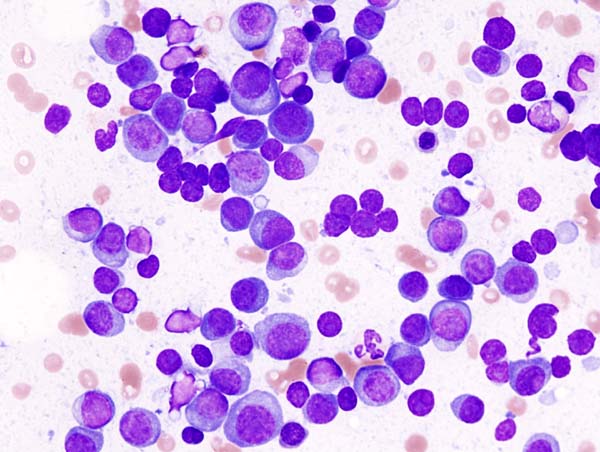
If you or a loved one has been diagnosed with multiple myeloma, understanding the treatment options is essential. Multiple myeloma treatments vary widely based on factors such as the stage of the disease, overall health, and personal preferences. Here, we’ll dive deep into the various treatment approaches, their side effects, and how to manage lifestyle aspects during the treatment journey.
Understanding Multiple Myeloma and Its Symptoms
Multiple myeloma generally affects older adults, and symptoms can vary greatly. Early stages may be asymptomatic, but as the disease progresses, common symptoms include:
- Bone pain, especially in the spine or chest
- Fatigue and weakness due to anemia
- Frequent infections due to a weakened immune system
- Kidney problems resulting from high levels of abnormal proteins
- High levels of calcium in the blood, leading to nausea, constipation, or confusion

How Is Multiple Myeloma Diagnosed?
Diagnosis often involves blood tests, urine tests, imaging scans, and a bone marrow biopsy to confirm the presence of malignant plasma cells. Once diagnosed, healthcare providers categorize the disease into stages, which helps in tailoring an appropriate treatment plan.
Treatment Options for Multiple Myeloma
While there is currently no cure for multiple myeloma, various treatment strategies can manage the disease effectively, prolong life, and improve quality of life. Treatment plans often include a combination of the following approaches:
1. Chemotherapy
Chemotherapy uses drugs to kill rapidly growing cells, including cancer cells. It may be used alone or in combination with other therapies.
- Common Drugs: Melphalan, cyclophosphamide, and bendamustine.
- Administration: Orally or intravenously.
- Side Effects: Nausea, hair loss, fatigue, and increased risk of infections.
2. Targeted Therapy
Targeted therapy specifically attacks cancer cells by interfering with proteins and pathways that cancer cells use to grow. It’s often used in combination with other treatments.
- Common Drugs: Bortezomib (Velcade), carfilzomib (Kyprolis), and ixazomib (Ninlaro).
- Side Effects: Nerve damage (neuropathy), fatigue, and low blood counts.
3. Immunotherapy
Immunotherapy helps the immune system identify and destroy myeloma cells. This treatment harnesses the body’s natural defenses and can be highly effective.
- Types: Monoclonal antibodies, CAR-T cell therapy, and immune checkpoint inhibitors.
- Common Drugs: Daratumumab (Darzalex) and elotuzumab (Empliciti).
- Side Effects: Infusion reactions, fatigue, and low blood counts.
4. Stem Cell Transplant
A stem cell transplant can offer a longer remission for some patients. High doses of chemotherapy are administered to destroy as many myeloma cells as possible, followed by an infusion of healthy stem cells to rebuild the bone marrow.
- Types: Autologous (using the patient’s own stem cells) and allogeneic (using stem cells from a donor).
- Procedure: Patients undergo a stem cell collection, followed by conditioning chemotherapy, and then stem cell infusion.
- Risks: Risk of infections, graft-versus-host disease (for allogeneic transplants), and potential for organ damage.
5. Radiation Therapy
Radiation therapy is often used to relieve bone pain or target specific areas where myeloma cells have accumulated.
- Procedure: High-energy beams are directed at cancerous areas.
- Side Effects: Skin reactions, fatigue, and nausea.
6. Corticosteroids
Corticosteroids, like dexamethasone and prednisone, are often included in treatment regimens to reduce inflammation, suppress the immune system, and combat myeloma cells.
- Benefits: These drugs enhance the effectiveness of chemotherapy and targeted therapy.
- Side Effects: Increased blood sugar, mood changes, and insomnia.
Managing Side Effects and Lifestyle During Treatment
Nutrition and Diet
Eating a balanced diet can help strengthen your body and support the immune system. Key nutritional strategies include:
- Protein-Rich Foods: To help repair tissues and support the immune system.
- Hydration: Essential for kidney health, especially with high calcium levels.
- Calcium and Vitamin D: Necessary for bone health, but consult your doctor before supplementing, as high calcium can be an issue in multiple myeloma.
Exercise
Regular, low-impact exercise such as walking, swimming, or yoga can help reduce fatigue, improve mood, and maintain bone health.
Mental Health Support
Coping with a chronic illness can be mentally and emotionally taxing. Consider counseling, support groups, or mindfulness practices like meditation.
Monitoring for Infections
With multiple myeloma and its treatments compromising the immune system, you must be vigilant in infection prevention:
- Practice good hygiene.
- Stay up-to-date on vaccinations (after consulting your healthcare provider).
- Avoid large crowds and exposure to sick individuals.
Pain Management
Bone pain is a common symptom in multiple myeloma. Pain management strategies include:
- Over-the-counter or prescription pain medications.
- Physical therapy and gentle stretching.
- Complementary therapies such as acupuncture.
Regular Monitoring and Follow-up
Regular check-ups and monitoring are essential to track the effectiveness of treatments and manage side effects. Blood tests, imaging scans, and consultations with specialists will help tailor ongoing care to your needs.
Advances in Multiple Myeloma Research
Recent advancements have expanded treatment options, including:
- CAR-T Cell Therapy: Modified T-cells are used to attack myeloma cells. This approach has shown promising results in clinical trials.
- New Drug Combinations: Ongoing research focuses on combining therapies to improve efficacy and reduce side effects.
- Personalized Medicine: Tailoring treatment based on genetic mutations in myeloma cells is becoming more common, leading to better-targeted therapies.
Treating multiple myeloma requires a personalized approach, combining various therapies to target the disease while managing side effects. While it remains a challenging diagnosis, advancements in research are continually improving the outlook for patients. By staying informed, actively managing your health, and working closely with your medical team, you can navigate the complexities of multiple myeloma treatment and maintain a fulfilling quality of life.
Top On Sale Product

Price Now: EUR 14.69 (Original price: EUR 32.49, 55% off)

Price Now: EUR 19.84 (Original price: EUR 32.00, 38% off)










